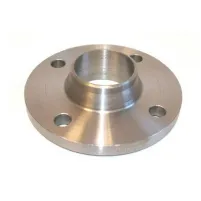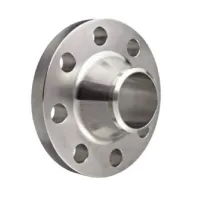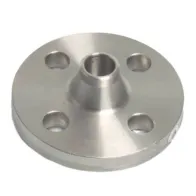-
Cangzhou Yulong Steel Co., Ltd.
-
Phone:
+86 13303177267 -
Email:
admin@ylsteelfittings.com
- English
- Arabic
- Italian
- Spanish
- Portuguese
- German
- kazakh
- Persian
- Greek
- French
- Russian
- Polish
- Thai
- Indonesian
- Vietnamese
- Zulu
- Korean
- Uzbek
- Hindi
- Serbian
- Malay
- Ukrainian
- Gujarati
- Haitian Creole
- hausa
- hawaiian
- Hebrew
- Miao
- Hungarian
- Icelandic
- igbo
- irish
- Japanese
- Javanese
- Kannada
- Khmer
- Rwandese
- Afrikaans
- Albanian
- Amharic
- Armenian
- Azerbaijani
- Basque
- Belarusian
- Bengali
- Bosnian
- Bulgarian
- Catalan
- Cebuano
- China
- China (Taiwan)
- Corsican
- Croatian
- Czech
- Danish
- Esperanto
- Estonian
- Finnish
- Frisian
- Galician
- Georgian
- Kurdish
- Kyrgyz
- Lao
- Latin
- Latvian
- Lithuanian
- Luxembourgish
- Macedonian
- Malgashi
- Malayalam
- Maltese
- Maori
- Marathi
- Mongolian
- Myanmar
- Nepali
- Norwegian
- Norwegian
- Occitan
- Pashto
- Dutch
- Punjabi
- Romanian
- Samoan
- Scottish Gaelic
- Sesotho
- Shona
- Sindhi
- Sinhala
- Slovak
- Slovenian
- Somali
- Sundanese
- Swahili
- Swedish
- Tagalog
- Tajik
- Tamil
- Tatar
- Telugu
- Turkish
- Turkmen
- Urdu
- Uighur
- Welsh
- Bantu
- Yiddish
- Yoruba

Oct . 22, 2024 19:11 Back to list
Understanding DIN Flange
DIN flanges, regulated by the German Institute for Standardization (DIN, or Deutsches Institut für Normung), are widely used in various industries due to their adherence to precise international standards. These flanges are essential for connecting pipes, valves, and equipment in high-pressure, high-temperature, and corrosive environments. Understanding DIN flange types, sourcing from a reputable DIN flange manufacturer, and knowing what to look for in DIN flanges can help you make the best choice for your project.
Common DIN Flange Types
DIN Weld Neck Flange (DIN 2631 - 2635)
- Overview: The weld neck flange is designed with a long tapered hub that is welded to a pipe. This creates a strong, leak-proof connection that can handle high pressure and temperature.
- Applications: Ideal for critical applications in oil and gas, chemical processing, and power plants.
- Advantages: Their conical shape distributes stress evenly, making them perfect for high-stress systems.
DIN Slip-On Flange (DIN 2576, 2502)
- Overview: Slip-on flanges are slipped over the pipe and then welded both on the inside and outside to secure them. They are easy to install and cost-effective.
- Applications: Typically used in low-pressure applications.
- Advantages: Easy to align and weld, these flanges are a go-to choice for general-purpose use.
DIN Blind Flange (DIN 2527)
- Overview: Blind flanges are solid plates used to close off the ends of pipes or valves. They are often used in pressure testing systems or when a pipe needs to be sealed temporarily.
- Applications: Suitable for closing pipe openings in industries such as oil refining, chemical processing, and water treatment.
- Advantages: Blind flanges allow for future modifications or access to the piping system, making them highly versatile.
DIN Threaded Flange (DIN 2565, 2566)
- Overview: Threaded flanges have internal threads that allow them to screw onto pipes without the need for welding. They are suitable for situations where welding is not feasible.
- Applications: Commonly used in plumbing systems and in environments where welding poses a hazard, such as explosive atmospheres.
- Advantages: Quick and easy to install, especially in environments where frequent disassembly is required.
DIN Lap Joint Flange (DIN 2641, 2642)
- Overview: Lap joint flanges are used with a stub end and allow for easy rotation and alignment during installation. The flange is not welded to the pipe but is instead bolted onto the stub end.
- Applications: These flanges are useful in systems that require frequent dismantling, such as maintenance-heavy industries.
- Advantages: Since the flange is not welded, it can be easily removed and reused.
Why DIN Standards Matter
DIN flanges follow strict international standards to ensure compatibility and reliability across a range of applications. The standards, including DIN 2633, DIN 2576, DIN 2527, and others, dictate the dimensions, pressure ratings, materials, and tolerances for each type of flange. By adhering to these standards, manufacturers ensure that DIN flanges are interchangeable with other components that meet the same criteria, providing confidence in the integrity and performance of piping systems.
Factors to Consider When Choosing DIN Flanges
Pressure Rating: DIN flanges are categorized by pressure ratings, which indicate the maximum pressure they can handle. These ratings are typically expressed in bars (e.g., PN6, PN10, PN16). Selecting the right pressure rating ensures the flange can withstand the operating conditions of your system.
Material: DIN flanges come in a variety of materials, including stainless steel, carbon steel, alloy steel, and even plastic for specialized applications. The material should be chosen based on the fluid, pressure, and temperature conditions. For example, stainless steel is corrosion-resistant and ideal for aggressive environments, while carbon steel is stronger and cost-effective.
Size and Dimensions: Ensure the flange's dimensions match the pipe or fitting it's being connected to. DIN standards provide precise measurements for the outside diameter, bolt circle diameter, and thickness, which must be followed for a proper fit.
Gasket Type: The flange type and the medium being handled determine the type of gasket needed for a tight seal. Materials for gaskets range from rubber for low-pressure applications to graphite or PTFE for high-temperature and chemically aggressive environments.
Corrosion Resistance: In systems where the flange will be exposed to corrosive substances or environments, corrosion-resistant materials like stainless steel or specially coated flanges are essential for preventing premature failure.
Finding a Reliable DIN Flange Manufacturer
When looking for DIN flanges for sale, it’s crucial to source them from a trusted DIN flange manufacturer. Quality and precision are vital for flanges that are expected to perform in high-pressure, high-temperature, or corrosive environments. Here are some tips on choosing the right supplier:
- Certification and Compliance: Ensure the manufacturer complies with international standards such as DIN, EN, ASME, and ISO. Certification ensures that the flanges meet all necessary safety and performance criteria.
- Reputation: Research the manufacturer’s reputation by reading reviews or asking for references. A manufacturer with a proven track record of delivering high-quality products is a safer choice.
- Customization: Some projects may require custom flanges with non-standard sizes, materials, or pressure ratings. Look for manufacturers that offer customization to meet your specific needs.
- Delivery and Availability: Ensure the manufacturer has the capacity to deliver flanges within your project timeline. Timely delivery is essential to avoid project delays.
DIN flanges play a critical role in ensuring the safety and efficiency of piping systems across industries. With a wide variety of DIN flange types available, including weld neck, blind, slip-on, and threaded options, it’s essential to choose the right flange based on your project’s specific requirements. Working with a reliable DIN flange manufacturer guarantees that you receive flanges that meet international standards for quality and performance. Whether you’re looking for flanges for sale or need custom options, understanding the types and applications of DIN flanges will help you make the best decision for your system.
Latest news
-
ANSI 150P SS304 SO FLANGE
NewsFeb.14,2025
-
ASTM A333GR6 STEEL PIPE
NewsJan.20,2025
-
ANSI B16.5 WELDING NECK FLANGE
NewsJan.15,2026
-
ANSI B16.5 SLIP-ON FLANGE
NewsApr.19,2024
-
SABS 1123 FLANGE
NewsJan.15,2025
-
DIN86044 PLATE FLANGE
NewsApr.19,2024
-
DIN2527 BLIND FLANGE
NewsApr.12,2024
-
JIS B2311 Butt-Welding Fittings LR/SR 45°/90° /180°Seamless/Weld
NewsApr.23,2024














